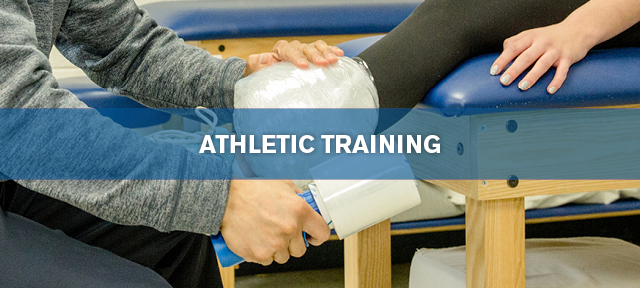Athletic Training
What is Athletic Training?
Athletic training is more than working with athletes. The service covers the prevention, evaluation and management of sudden and ongoing conditions that can impair your movement and abilities.
Athletico’s Certified Athletic Trainers
Our certified athletic trainers (ATs) are highly skilled health professionals who work under a physician’s direction to provide optimal healthcare for athletes. They know how to help you reduce the risk of injuries, provide care for a sudden injury and guide the entire course of your recovery. All of our ATs are licensed professionals whose education includes specialized training in human anatomy and physiology. Based on these qualifications, as well as the specific regulations to practice athletic training in many states, the AT is the most qualified individual, other than a physician, to manage high school and youth athletes’ injuries on a daily basis.
By working with our ATs, everyone involved in the continuum of care of student-athletes, from physicians to coaches to administrators and parents, can feel confident that a professional is caring for the health and safety of young women and men. Having a licensed AT available for emergency situations ensures athletes receive the highest standards of care when they need it.
Your Certified Athletic Trainer’s Background
In addition to their degree, our licensed ATs have fulfilled the requirements for certification (including passing certification examinations) established by the Board of Certification (BOC).
Our ATs are required to have the following proficiencies:
- Injury/illness prevention and wellness protection
- Clinical evaluation and diagnosis
- Immediate and emergency care
- Treatment and rehabilitation
- Organizational and professional health and well-being
Athletico provides Athletic Training Community Outreach to over 300 organizations throughout Delaware, Illinois, Iowa, Maryland, Michigan, Mississippi, Missouri, Nebraska, Virginia and Wisconsin including:
- High Schools
- Colleges and Universities
- Professional Sports Organizations
- Performing Arts Organizations
- Rugby Clubs
- Endurance Events
- Golf Events
- Clubs and Organizations
- Tournaments and Special Events
Request Athletic Training Coverage
As part of the Athletic Training Department’s mission, we look to provide the highest level of service to those we provide athletic training services to. Each year we work with a multitude of teams and special events throughout the communities we serve. Our company and dynamic staff take an active role in building better relationships for all our onsite presences.
The following guidelines are used in evaluating athletic training coverage:
- Requests will be considered if sent at least six (6) weeks in advance of the desired commitment deadline.
- Organizations must be based in the state of Delaware, Illinois, Iowa, Maryland, Michigan, Mississippi, Missouri, Nebraska, Virginia or Wisconsin, or the event must be hosted in one of those states.
- Requests will be accepted via online application only.
If you feel your organization meets the listed guidelines, click the application button below.
Clinical Experience Offerings for Athletic Training Students:
As a leader in supporting the athletic training profession, Athletico & Pivot offers students clinical experience opportunities that align with CAATE standards. Through these rotations, students gain experience in the outreach athletic training setting.
To be considered for a clinical experience placement, the academic institution representing the student will need to have an affiliate site agreement with Athletico & Pivot.
If interested in an Athletic Training Clinical Experience, please email CollegeRelations@athletico.com.

